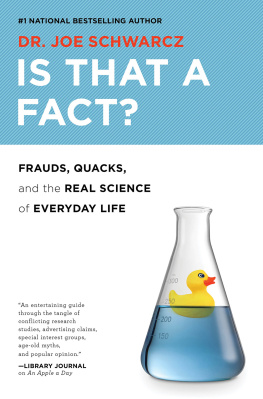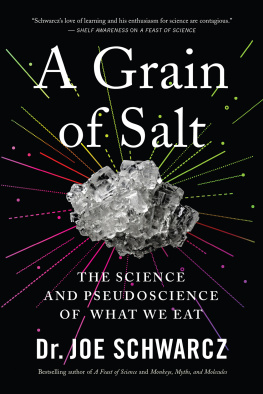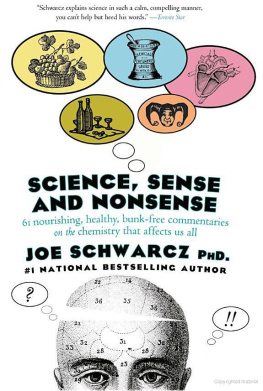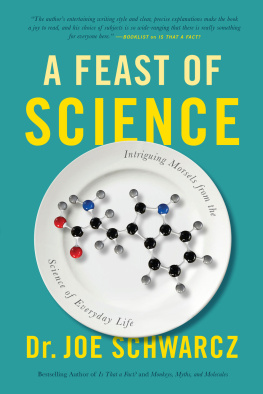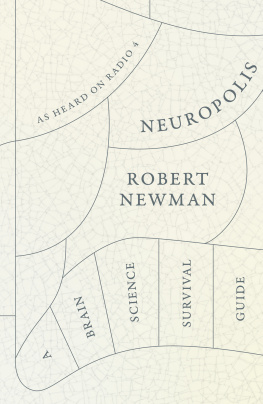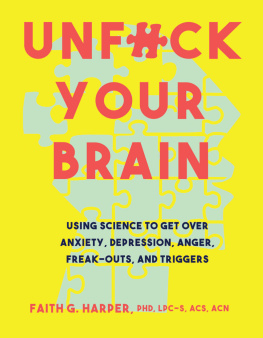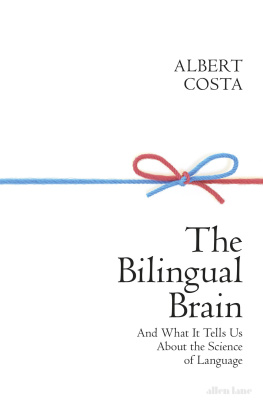Copyright 2010 Dr. Joe Schwarcz
All rights reserved. The use of any part of this publication, reproduced, transmitted in any form or by any means electronic, mechanical, photocopying, recording or otherwise, or stored in a retrieval system without the prior written consent of the publisheror in the case of photocopying or other reprographic copying, license from the Canadian Copyright Licensing agencyis an infringement of the copyright law.
Doubleday Canada and colophon are registered trademarks
Library and Archives of Canada Cataloguing in Publication has been applied for
eISBN: 978-0-385-66931-3
Published in Canada by Doubleday Canada,
a division of Random House of Canada Limited
Visit Random House of Canada Limiteds website: www.randomhouse.ca
v3.1
CONTENTS
INTRODUCTION
F or my thirteenth birthday, I received a typewriter as a present. It wasnt even electric, but at the time it was quite a gift. Today, I suspect that most students wouldnt even recognize a typewriter if they saw one. And why should they? That dinosaur has been completely replaced by the computer. But my first typewriter was a treasure (in no small part because my handwriting was atrociouswhich it still is). I enjoyed writing even then, but sometimes I couldnt even read what I had written. My new typewriter changed that in a hurry. I could now write, and people could actually read what I had written.
So what sort of stuff was I interested in writing in those days? Well, call me a nerd, but I enjoyed making up science quizzes for my friends. Not exactly a common hobby for a kid in grade seven, especially given that it had nothing to do with any school activity. Science there was nonexistent. Until a general course on the subject in grade nine, I dont think I heard the word science mentioned. But by that time I had already become enthralled.
I had discovered science sometime in grade six, despite my teachers best efforts to hide the existence of this discipline. It was a teenage magician at a birthday partyand not a very good one, as I recallwho involuntarily sparked my interest by pretending to fuse three pieces of rope into a single strand using a magic chemical. To this day I do not know why he used the term magic chemical instead of hocus pocus or abracadabra, but I do know that it set me wondering about both magic and chemistry. I took out books from the library and started to read voraciously about both.
For me, chemistry turned out to be magical. I was immediately taken by its fascinating history and its applications to daily life. A whole new world of paints, plastics, drugs, explosives, cosmetics and nutrients opened up for me. But it was somewhat of a lonely world since none of my friends were into chemistry. So I started to make up little quizzes to see if I could generate some interest. If only they realized how fascinating those cavorting molecules were, they would surely share in my excitement. My little handwritten attempts, I must admit, didnt meet with much success. And then along came the typewriter. I wouldnt say I was besieged to produce more and more of my quizzes, but at least my friends were reading them. Probably because they now could read them.
Truthfully, I cant remember all the questions I concocted on that first typewritten quiz of mineit was just too long ago. I do, though, remember the very first one. Thats because it was about a quote that had really struck me, and one to which I have referred on many occasions since.
Here was the question: What is the it in the following quotation? It is enough to drive one mad. It gives me the impression of a primeval tropical forest full of the most remarkable things, a monstrous and boundless thicket with no way of escape, and into which one may well dread to enter.
Of course, none of my friends knew the answer to that, and how would they? It was organic chemistry. The quote is attributed to the German chemist Friedrich Whler and appeared in a letter to his former professor and mentor, the Swedish chemist Jacob Berzelius. I thought it was a great quote; I could really relate to it. I had stumbled upon organic chemistry in my readings and was beginning to realize how fascinating it was. But did it ever seem complicated! I didnt know what to make of all those drawings that somehow depicted molecules. Whler, I thought, had hit the nail right on the head. And I thought his picturesque words would interest my friends.
I could hardly wait to elaborate on the answer. Why? Because I was ready to say that, while Whler had suggested there was no escape from the thicket of organic chemistry, he himself would eventually be the one to find it. Whlers classic experiment in 1828, whereby he produced urea, an organic compound, in the laboratory, showed that organic molecules had no vital force infused in them. This dispelled the notion held by many, including Berzelius, that organic compounds could only be created by nature, not by man. The field was now thrown open. Dyes, medicines and who knew what else could be created in the lab by chemists, if they were ingenious enough. Alas, my friends didnt get too excited about it. But I remain as enthralled by organic chemistry today as I was then. More than ever, I enjoy making up questions that I hope stimulate some scientific interest. And this book is filled with them.
So, let the brain sparks fly!

CHEMISTRY:
THE BEST
MEDICINE
A drug introduced in 1981, isolated from a soil fungus, revolutionized the transplantation of human organs. What drug was that?
Cyclosporin. Early transplants were plagued by organ rejection. The recipients immune system considered the organ a foreign intruder and mobilized its forces for battle. Doctors realized that if transplants were ever to be successful, the bodys immune system would have to be held in check.
By the time Dr. Christiaan Barnard performed the worlds first heart transplant in 1967, drugs that curbed immune activity were available, but they left a lot to be desired. The medications managed to keep the immune system from rejecting the organ, but the extent of immune suppression was such that it left the patient susceptible to all sorts of infections. In fact, Louis Washkansky, the first recipient of a transplanted heart, died of pneumonia he contracted because of suppressed immunity. But the problem of rejection was essentially solved when cyclosporin came onto the scene in 1981.
The discovery of the first truly effective anti-rejection drug was somewhat serendipitous, and dates back to the early 1970s. In those days, pharmaceutical companies searched high and low for novel antibiotics, investigating whatever fungus they could get their hands on. After all, antibiotics isolated from fungi, such as penicillin and streptomycin, had already proven their worth. Hoping to find some novel antibiotic-producing fungus, pharmaceutical companies routinely asked their employees to bring back soil samples from their travels. The Sandoz company lucked out. A soil sample collected in Norway yielded a strain of fungus that produced a compound composed of a ring of amino acids, eventually named cyclosporine. It looked like a good candidate for antibiotic activity. Unfortunately, it turned out not to have any such properties.


